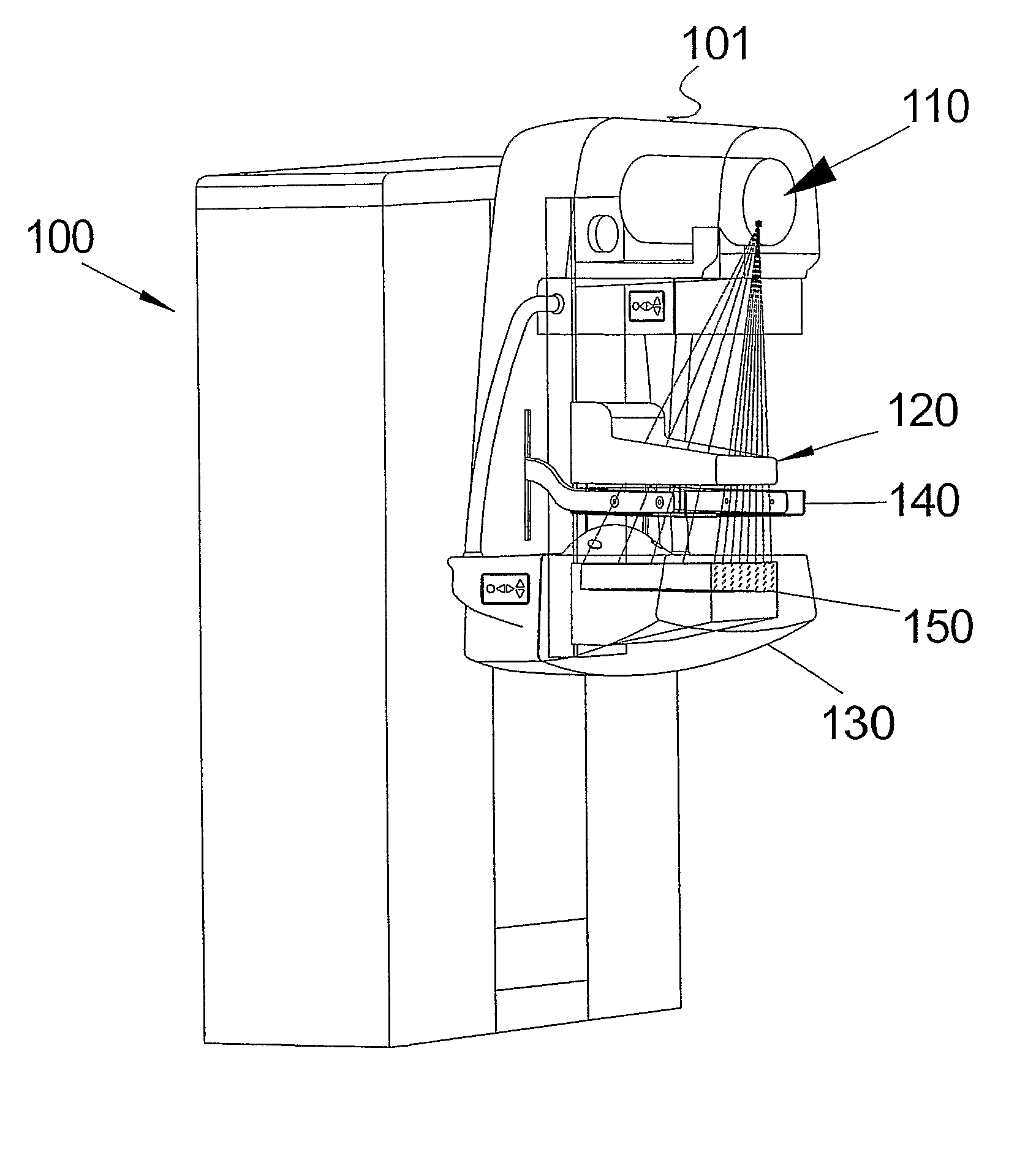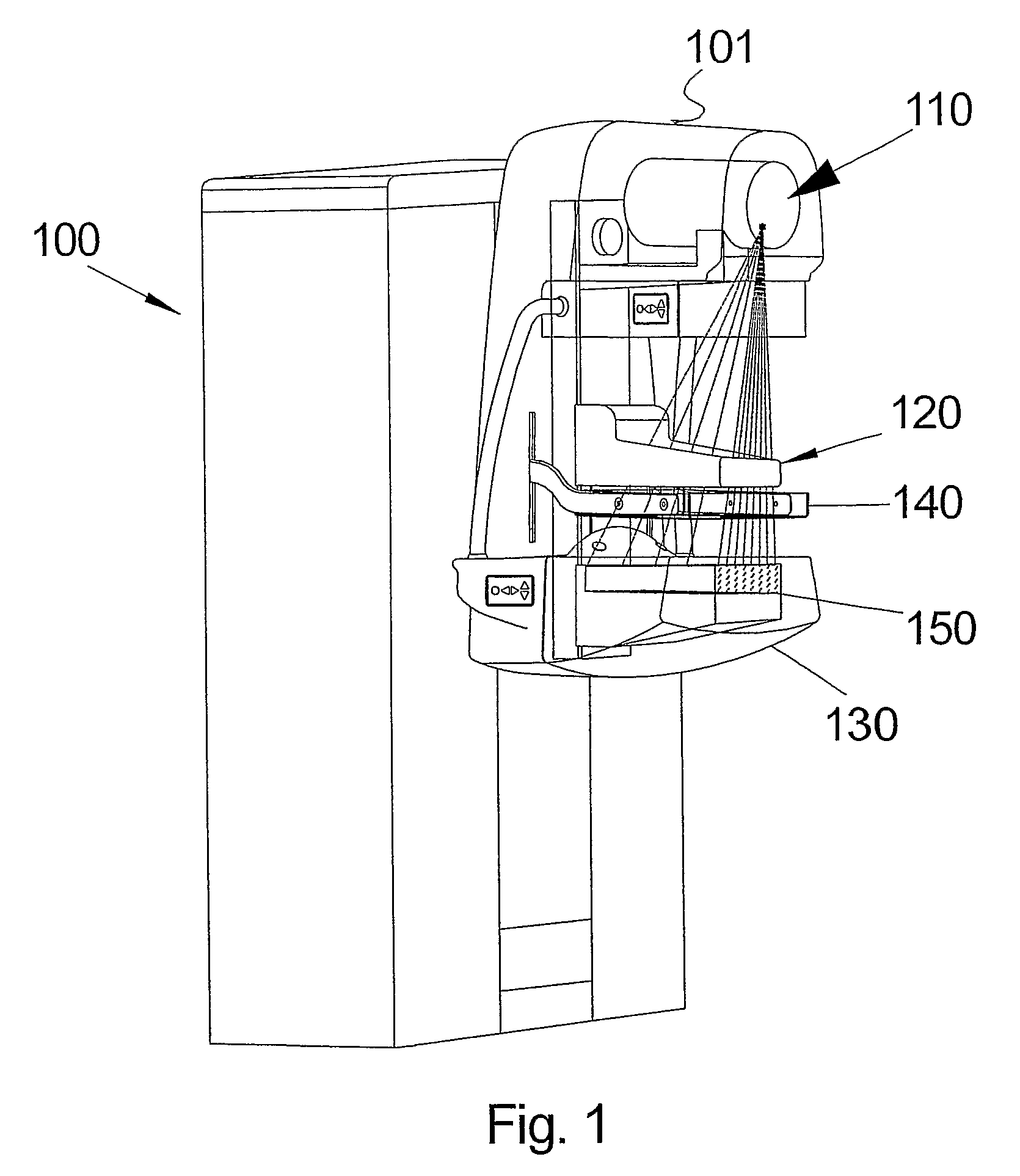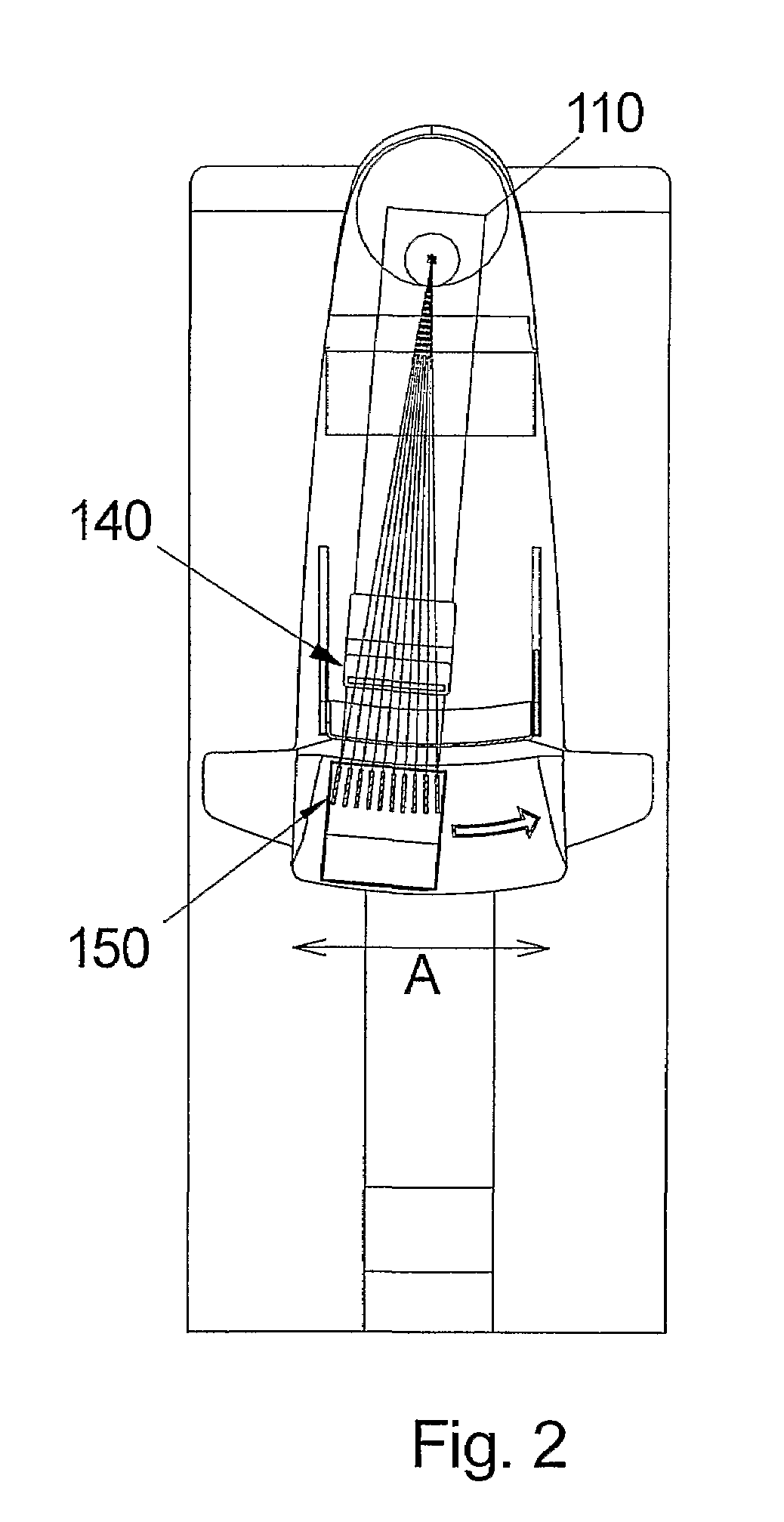Method and arrangement relating to x-ray imaging
a technology of automatic exposure control and x-ray imaging, which is applied in the field of method and arrangement of automatic exposure control in an x-ray apparatus, to achieve the effect of improving the exposure over the breast and low attenuation of x-rays
- Summary
- Abstract
- Description
- Claims
- Application Information
AI Technical Summary
Benefits of technology
Problems solved by technology
Method used
Image
Examples
Embodiment Construction
[0043]FIG. 1 illustrates an X-ray imaging system 100, according to one preferred embodiment, based on a photon-counting detector that scans the image field in one dimension that is referred to as the x-dimension. The system 100 comprises an X-ray source (tube) 110 arranged in a housing 101, patient support 130 and pre-collimator housing 120 and compression paddle. A collimator 140 is arranged in a collimator support structure and the patient support 130 includes an array of detectors 150.
[0044]As it is illustrated in FIG. 2, the X-ray source 110 and detector array 150 are arranged to be displaced radially with the source 110 in the centre, thus scanning the section A. An image is acquired by scanning a detector across the image field. Whenever the detector has scanned a predefined distance, the number of photon counts collected is read-out and the counter is reset (zeroed). This means that the distance the detector moves between readouts defines the pixels in the scan direction. In ...
PUM
 Login to View More
Login to View More Abstract
Description
Claims
Application Information
 Login to View More
Login to View More - R&D
- Intellectual Property
- Life Sciences
- Materials
- Tech Scout
- Unparalleled Data Quality
- Higher Quality Content
- 60% Fewer Hallucinations
Browse by: Latest US Patents, China's latest patents, Technical Efficacy Thesaurus, Application Domain, Technology Topic, Popular Technical Reports.
© 2025 PatSnap. All rights reserved.Legal|Privacy policy|Modern Slavery Act Transparency Statement|Sitemap|About US| Contact US: help@patsnap.com



